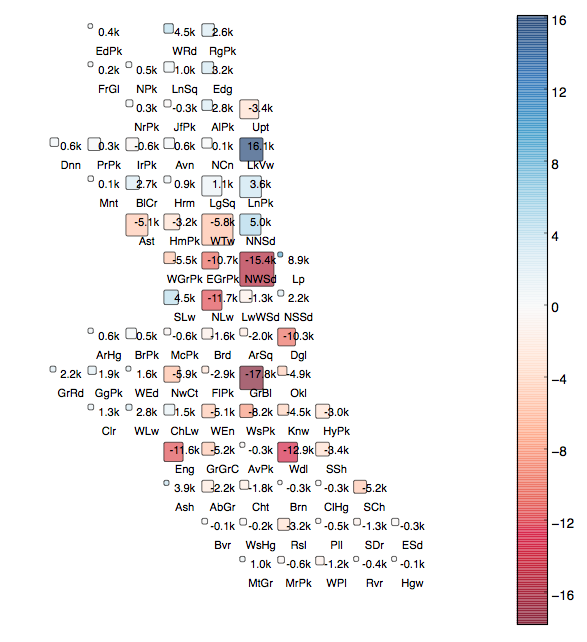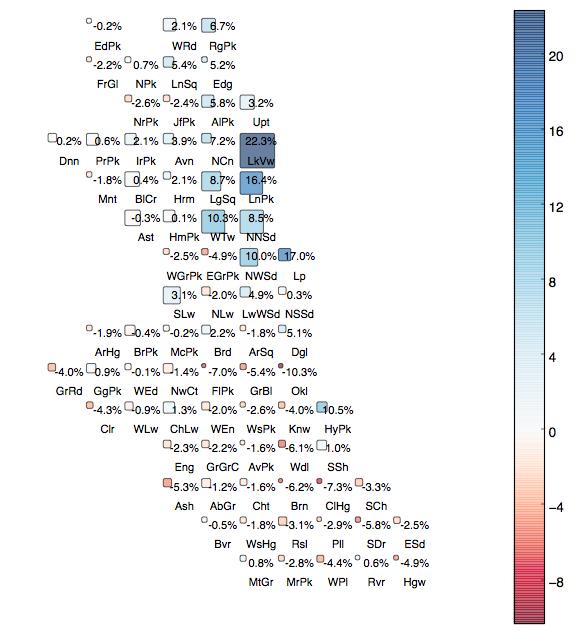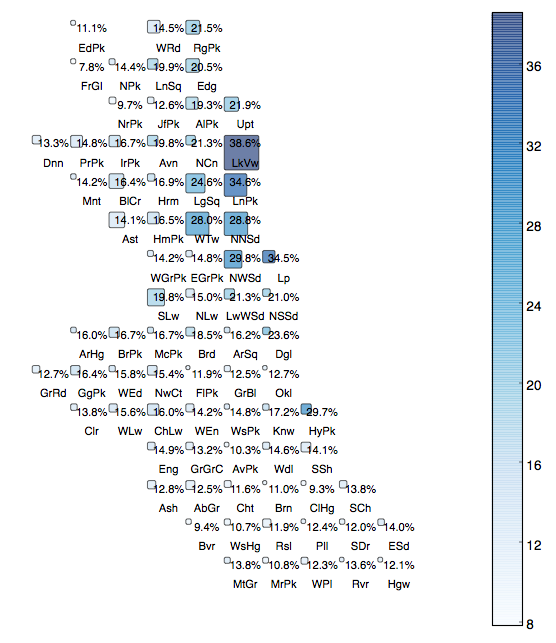
Here's a cartogram of the change in the population of young adults, age 20-29, from 1950 to 2010, by community area. From 1950 to 2010, Chicago's population decreased by around 1 million people, but look: in some neighborhoods, the number of young adults actually increased, in some areas significantly!
This mostly goes to show that Lake View, Lincoln Park, and the Near North Side aren't "typical" neighborhoods, and aren't best understood as thriving areas, but instead as neighborhoods that have been disproportionately successful at attracting a large number of the young adults: affluent, and childless.
Data is from the 1950 and 2010 census, aggregated by community area. The size of each box indicates the relative population of young adults in 1950.
Here's the same data in percentage form. This shows the change in the percentage of the neighborhood population that's between the ages of 20 and 29. The boxes are scaled by the 2010 population of 20-29 year olds.

Comparing the two graphs, we can see that even though the Near West Side was basically demolished in the second half of the 20th century, the relative proportion of its remaining population that is age 20-29 actually went up by 10%.
Here's the graphs for 1950 and 2010 individually. Each shows the proportion of each neighborhood's population between age 20 and 29. Notice how in 1950, most neighborhoods sit around 15% to 18% young adults, it's pretty consistent across the city, and even the highly populated neighborhoods (big boxes) don't have outlandish proportions of young adults.

Then the city gets really weird, everyone from age 20 to 29 moves out of the neighborhoods, and we see enormous concentration of young adults on the north lakefront. You want to talk about self-segregation? Fully 38.6% of the population of Lake View is between 20 and 29. That's crazy. That's not a neighborhood, that's a meat market.
